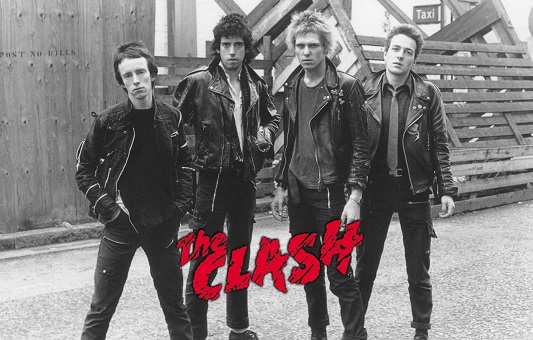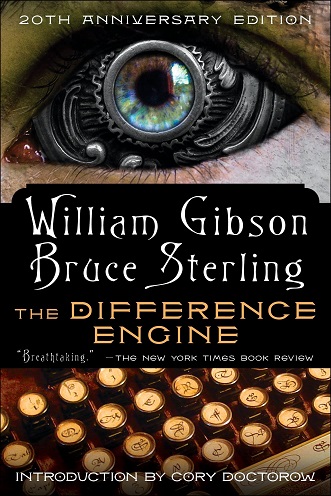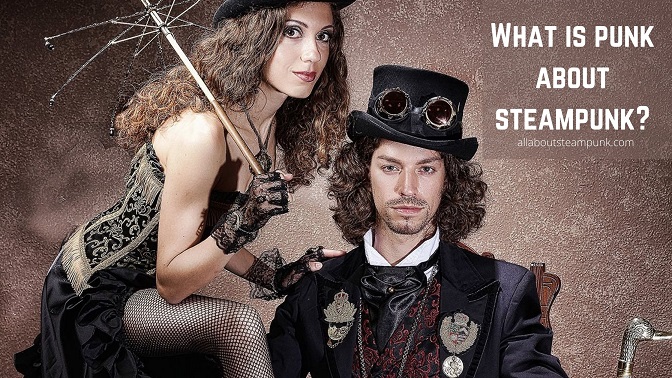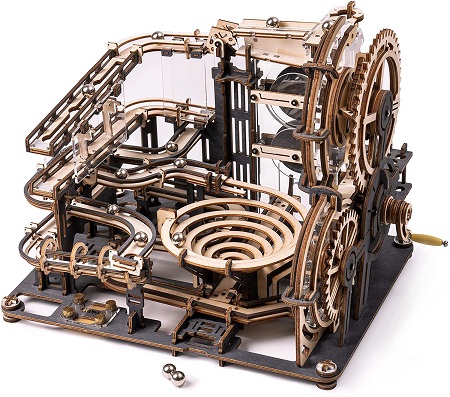There are a lot of theories surrounding the punk nature of steampunk culture. Is it called punk because of its close association with the cyberpunk genre? Or is it called punk because of the do-it-yourself attitude of the people associated with this genre? To answer these questions, it is important to first understand a little bit about the origins of this word and how it was adopted into other alternative cultures and art forms.
Contents
Origin of the word punk in popular culture
The word punk has always been a controversial label ever since it was first used in popular culture in the 1970s. During this time the word punk gained a lot of popularity and was used as a generic music label to describe anarchic and irreverent bands such as Television, Sex Pistols, The Clash, and many more. Most of the punk bands rejected the mainstream elements associated with 1970s rock and created short and fast-paced music. The songs contained hard-edged melodies and the lyrics usually contained political and anti-establishment themes. Most of the bands would self produce recordings of their work and distribute them independently through individual record labels. This gave rise to the DIY ethics which are associated with this genre. By the late 1970s punk had become famous in the UK and was turning into a cultural phenomenon. People were expressing themselves with distinct types of clothes such as T-shirts with offensive messages written on them, jewelry, spiked jackets, studded bands and, harsh and gritty looks.


‘Punk’ in Science Fiction Literature
The first time the word punk was used in science fiction literature was by Bruce Bethke when he published a short story called ‘Cyberpunk’. William Gibson later provided definitive elements for this genre in his works called ‘Neuromancer’. In this case, punk worked as a fictional style of combining elements such as gritty, downbeat, low-life punk attitudes with cyberspace, cybernetics, and other futuristic technologies. The recurring theme for cyberpunk usually visualizes a collapse in society, which leads to social disparities and people trying to overthrow the imposing authorities.
The cyberpunk genre has often been seen as the inspiring force for a lot of other genres in the science fiction community. The most common being biopunk, nanopunk, and yes most definitely steampunk. The term was first used by K W Jeter in the late 1980s. K W Jeter was, at the time, a well-known author in the science fiction community and was known for his cyberpunk works such as Dr. Adder, The Glass Hammer, and many more. He coined this term jokingly as he was trying to find a suitable word for some of his works which were based on anachronistic technologies and the Victorian era. He came up with the word steampunk as steam was the main source of power during this era and would perfectly compliment the retrofuturistic theme as had been the case with its futuristic counterpart, cyberpunk.

Even though the word was borrowed from its famous counterpart, cyberpunk, steampunk literature can be traced as far back as 1870s and 1890s to the works of Jules Verne and H.G. Wells. These early science fiction novels were considered to be the forerunners in providing the aesthetics associated with this genre that we see today. Other authors such as Michael Moorcock, K W Jeter, Bruce Sterling, etc. increased the visibility of this genre by providing descriptive narrations in their works. ‘The Difference Engine’ by William Gibson and Bruce Sterling (1990) is considered by many to be one of the best steampunk novels while providing a lot of rigorous details and having compelling characterization.

Evolution of Steampunk culture into subcultures
Steampunk is a particularly compelling visual form of fiction that is often set around retrofitted technologies in an industrial era of steam power. Due to in part of its visual appeal and its alternative take on science and technology, steampunk has been one of the popular genres to be translated into other forms of media such as television, films, comic books, video games, etc. This is one of those rare sub-genres of science fiction which also made a footnote in other performative subcultures such as music, fashion, arts and crafts, and gaming.
Nowadays the fanbase of this genre has also moved on from discussing popular literary works to a more cohesive community that discusses arts and crafts, clothing, and other lifestyle choices. Ever since its popularity in the early 2000s, steampunk has attracted people interested in creative arts. Steampunk has one of the largest communities of DIY arts that create some of the most unique and innovative steampunk designs. Some of these designs have a compelling visual appeal and at the same time can also have a function in their daily life.
The steampunk community also consists of people who are fashion enthusiasts and display their extravagant costumes at cosplay and steampunk-themed events. Early fans of steampunk fashion usually hand-made and designed every aspect of their costumes including accessories. Nowadays you can find stores, both online and on land, dedicated to providing the most aesthetically beautiful steampunk clothes and accessories.
So is there a punk in the steampunk culture?
Now that we have simplified what punk was all about, we can try to identify the point of intersection between punk and the steampunk culture. Punks usually identify social disparities and are against social norms. Steampunks are also similar in the sense that they recognize the social disparities of the Victorian era and try to reject the social norms of this era. For example, men and women alike adorn amazing steampunk personas of explorers, pirates, air marshals, scientists, vigilantes, etc. This was not the case in the Victorian era where women were usually housewives.
Many steampunk fans also create their own steampunk aliases which they use as a getaway from their everyday lives. These people not only create personal characters but also have different personality traits when adorning these characters. They use their love for steampunk culture as a way to break free from the existing social norms and explore the world from a new perspective.
Apart from this steampunks are also well known for tinkering and creating unique designs, sculptures, artwork, etc. They have a diehard DIY attitude towards the existing technologies and their designs range from creating new inventions to redesigning existing technology to suit the steampunk aesthetic.
Even though steampunk may not have the gritty and harsh aesthetics of the punk movement which happened during the 1970s, it certainly captures the essence of the movement in terms of its disregard for social norms and the diehard do-it-yourself attitude.



Shakespeare was an early user of the word ‘punk’, which originally meant ‘female prostitute’. … In the late 17th century the word began to be used to describe a boy or young man being kept by an older man for sex.